Nova Scotia’s Digby, may be an easy place to bypass, yet if you stop a while, you will not be disappointed. Discovering the hidden gems of Nova Scotia’s Digby will reap you rewards untold. Let us show you why.
Digby – a town worthy of eating
Digby sits on the entrance to the world famous Fundy Bay. The massive stretch of water famed for its world record breaking tidal range, reaching up to 53ft. Sheltered by its hilltop surroundings, Digby is renowned for its fishing and in fact is classed at the Scallop Capital of the World. So if you are fish lovers, then this is the place you must come. A daily fish market is where you must head for the acquisition of this sumptuous seafood. Or of course engage in one of the many restaurants in town that will serve you up a plate in all sorts of guises.
The town itself is pretty yet small, focusing all of its efforts on its fishing trade. A drive along to the ferry port, will evidence the importance of the sea with its fishing pods of farmed Atlantic Salmon. The ferry departure will take you effortlessly across the famed waterway to Saint John in New Brunswick in just over two hours. For no more than £60 ($122) for a car and two adults you can save yourselves a good six hours driving time.
However, it is Digby as a base that will give you the great rewards. With no more than an hour’s drive south and north you can capture so much beauty, nature, history and culture, so read on, if you will.
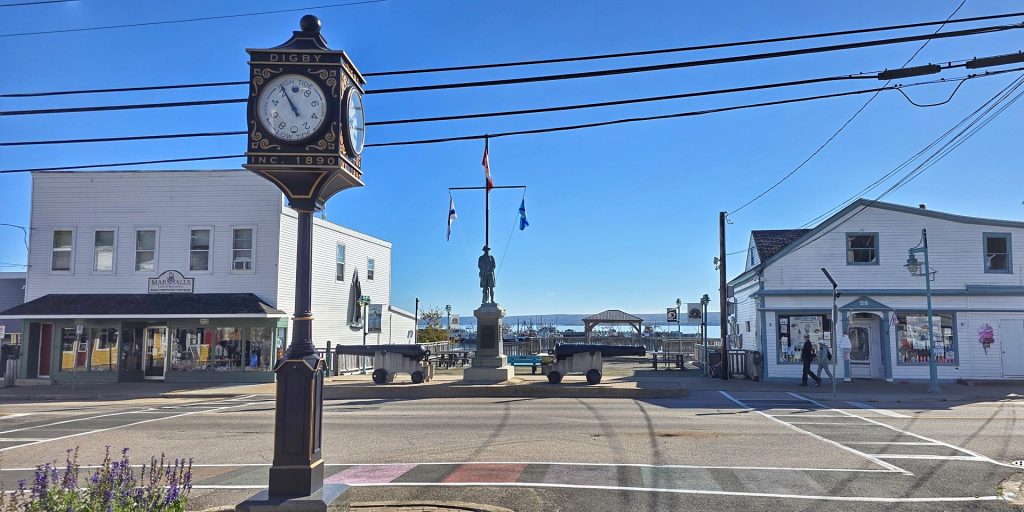
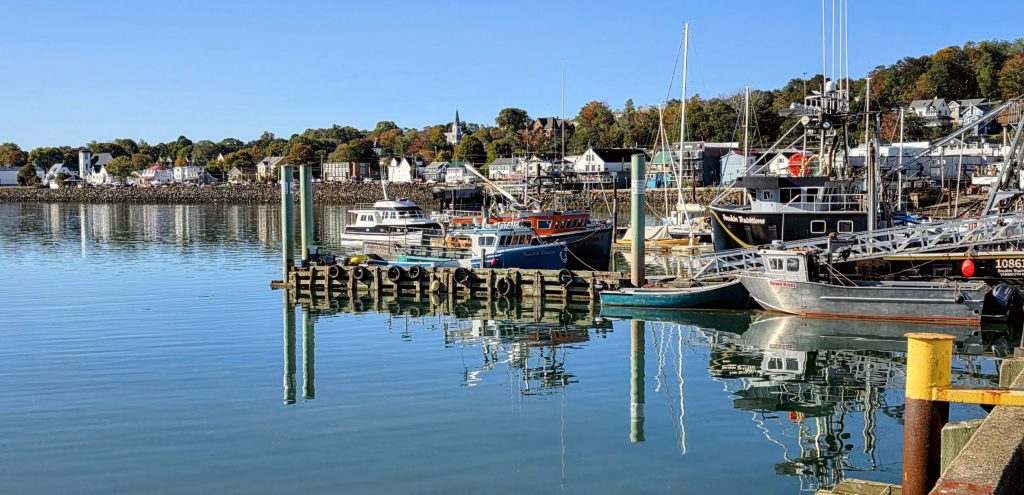
Digby Neck and Islands
Set your compass south west and you will enter what is called the Digby Neck. A narrow strip of land upon which beaches, forest and ancient rocks balance precariously. A scenic drive through the most lovely forest, especially in the autumn will reward you with a tranquility that knows no bounds. Small fishing villages and hidden beaches await you if you venture off the beaten track. Two FREE government-run ferries will carry you across two stretches of water that take you from the Neck to Long Island and Brier Island. And it is here that the magic begins.
Just five minutes from the first ferry at East Ferry across to Long Island’s Tiverton, you will find a Nature Reserve trail that meanders through lush forest along a boardwalk. Fringed with a kaleidoscope of autumn colours, a 20 minute walk brings you to the most incredible basalt coastal cliffs. With the sea air brushing your face, you are welcomed into St Mary’s Bay where millions of years of geological timelines can be traced. 235 steps down towards the water’s edge, you find your magical prize. The sight of Balancing Rock.
This unique 20 tonne column seems to just teeter on the edge, yet robustly stands against all of the natural forces of nature. Legend has it that sailors from times past have tried to bring the rock down, to no avail. Today it stands as assertively as the day history created it. And it is there for us to enjoy in all its glory. Set off by the azure seas that wash upon it, Balancing Rock is a true marvel of nature and should not be missed. It is, as one of my friends said, so much more than just one rock It is a lesson in time and natural resilience.
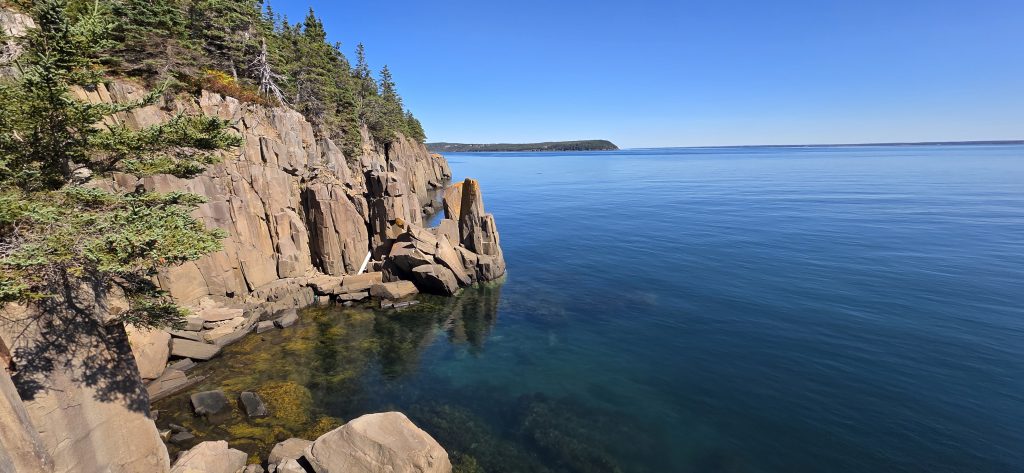
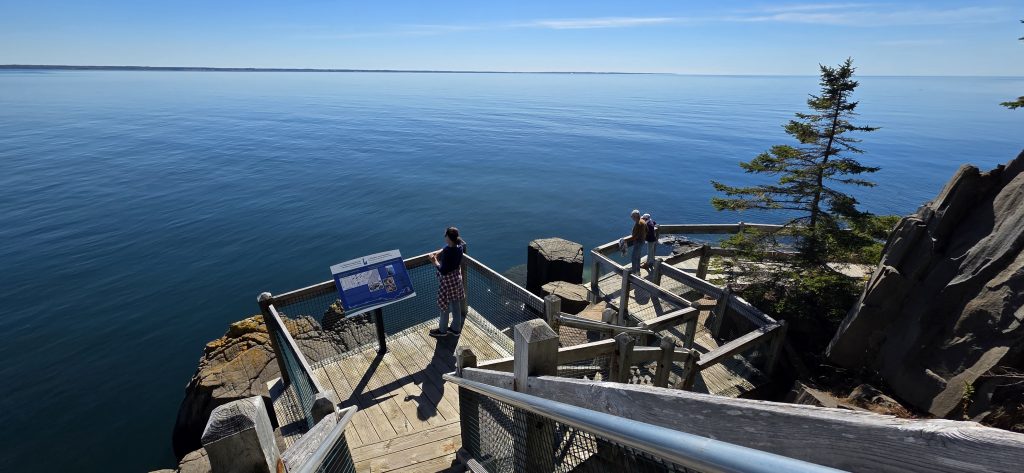
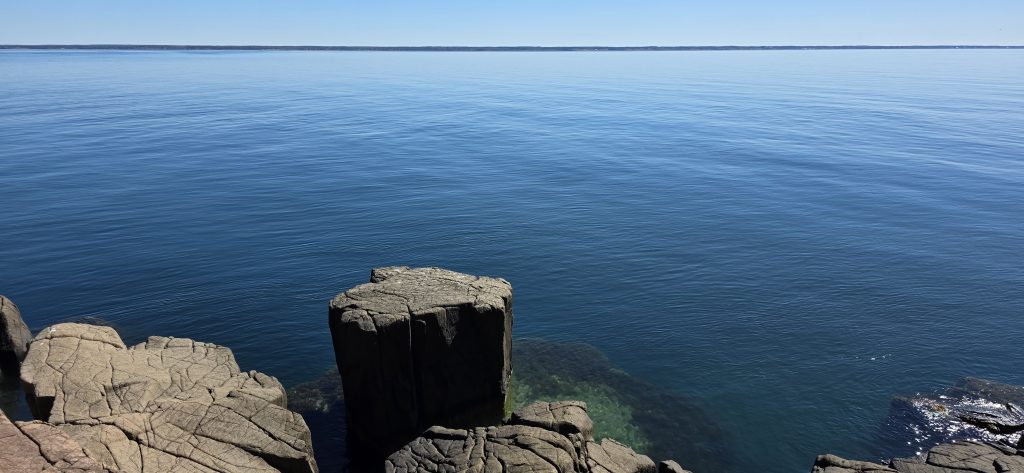
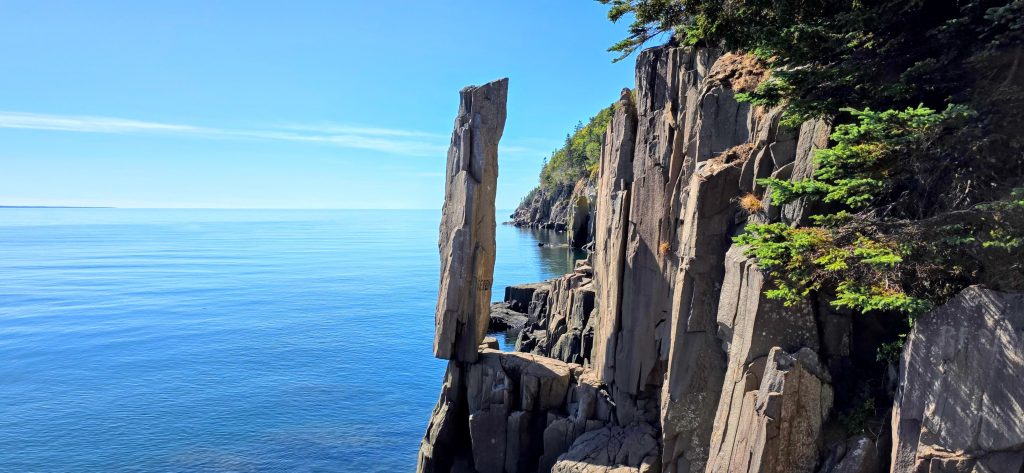
.
Brier Island and Whale Watching
At the far end of the Digby Neck and peninsula you find the small island of Brier. A fishing community that centres around Westport where the second of your two ferries will bring you. What a welcome you will receive from the inhabitants that amount to no more than 200 people. Focused on either fishing, tourism or services for tourists, the island is like going back in time and yet it has all mod cons. Life on the island has a lovely relaxed feel to it and yet there are plenty of scars here if you look deep enough. Perfect Storms that have battered the island to within an inch of its life and a strong heritage for the indigenous Mi’maq people who called this home. Brier Island was also home to Joshua Slocum, who was born on the island and is famed for being the first person to circumnavigate the world on his sailing boat single handed in 1898.
Brier Island may well today be a magnet for whale watchers, although a few days here will soon reveal how much of a walkers and bird lover’s paradise this small island is. The walks around the coast are quite magnificent as you tread what feels like maiden earth. Seals sing in the background as they seek safe harbour from the seasonal population of sharks in the autumn months. In the spring, no doubt, puffins would be visitors here, making this a haven for nature lovers. And you cannot forget the Meadow Bog, which is now accessible via the boardwalk taking you deep into the heart of the bog. It is here that you will find the rare and endangered East Mountain Avens during summer months that thrive in these damp conditions. Of an autumn morning, watch as the eery mists curl around the trees and envelope the bog as it eventually passes through to the sea. it is quite an experience.
And of course we cannot pass up the chance to talk about the Whale Watching tours. There are three different companies to choose from. You can do the Zodiac tour on the Rib, the Brier Island Tour and the one we took, the Mariner Cruises that offered a special off season package for two people that included the 3 hour tour plus B&B all for just $185 plus taxes. Which equates to about £100, which is an absolute bargain.
It was an incredible trip that saw sights of porpoise and five humped back whales. Thanks to the deep v-shaped shelf in the Fundy Bay, it provides perfect feeding conditions for sea life, whales in particular. From June to mid October, tours are run once or twice a day and if Mother Nature blesses you with sighting, it is the most magnificent experience. Especially when they float right beneath your boat. I like these guys because they are a family run business, use one of their old fleet of Lobster fishing boats making it super sturdy for the 30 people on board, they also keep the impact on their whales habitat to an absolute minimum. So there is no chasing after whales and when sighting are close the engines turn off and the whales come to you, if they choose. There is no sonar, just the captain’s beady eyes and a pair of binoculars. It is a very special experience and we highly recommend it as part of your discovery of Digby’s hidden gems. Check out our vlog giving you unique footage of our close encounter with up to five whales during our tour.
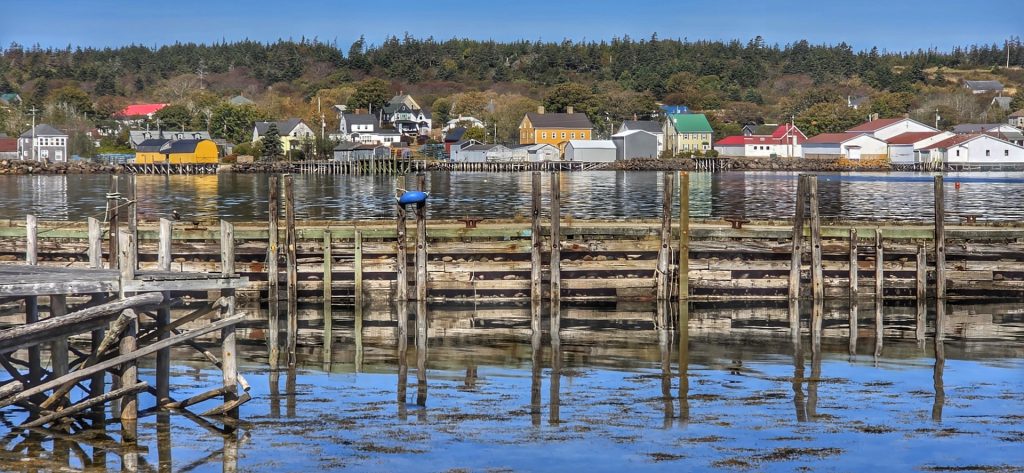
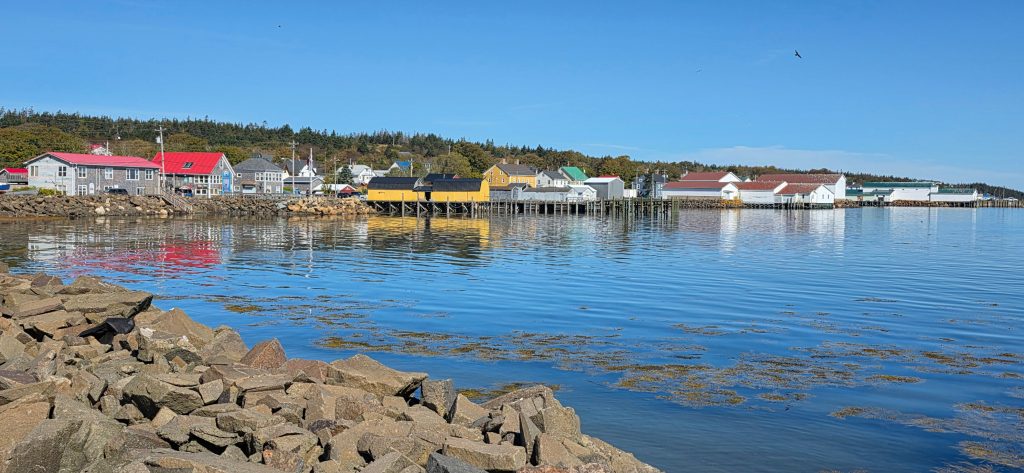
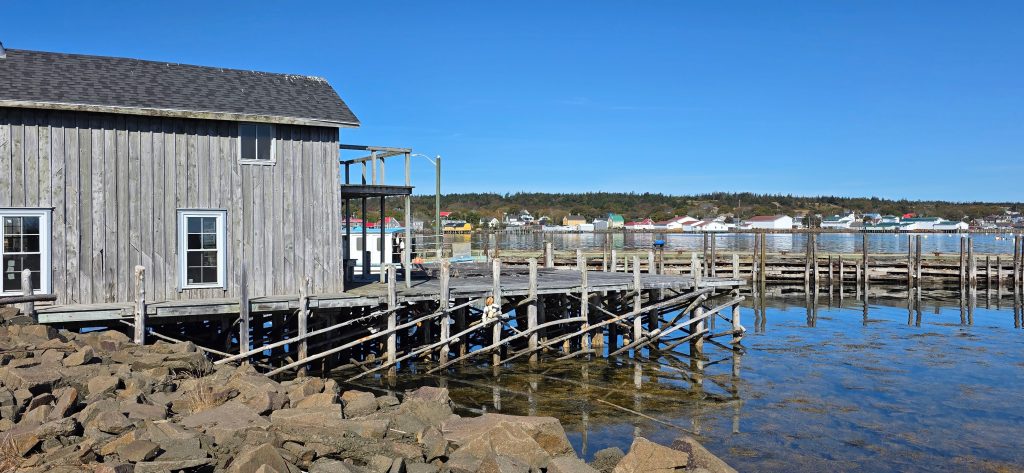
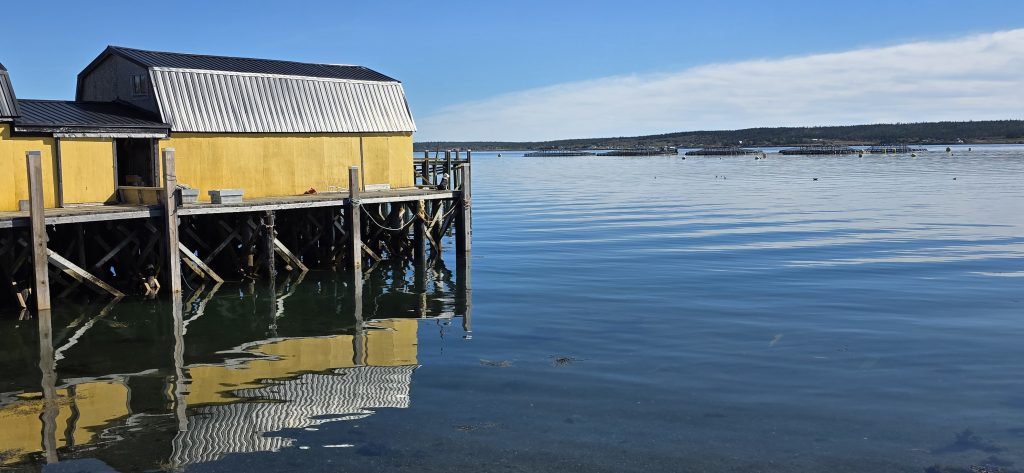
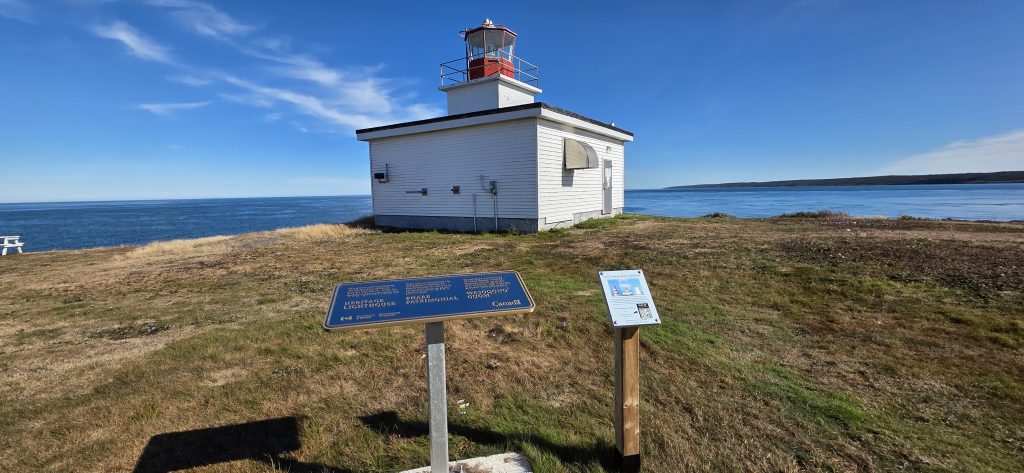
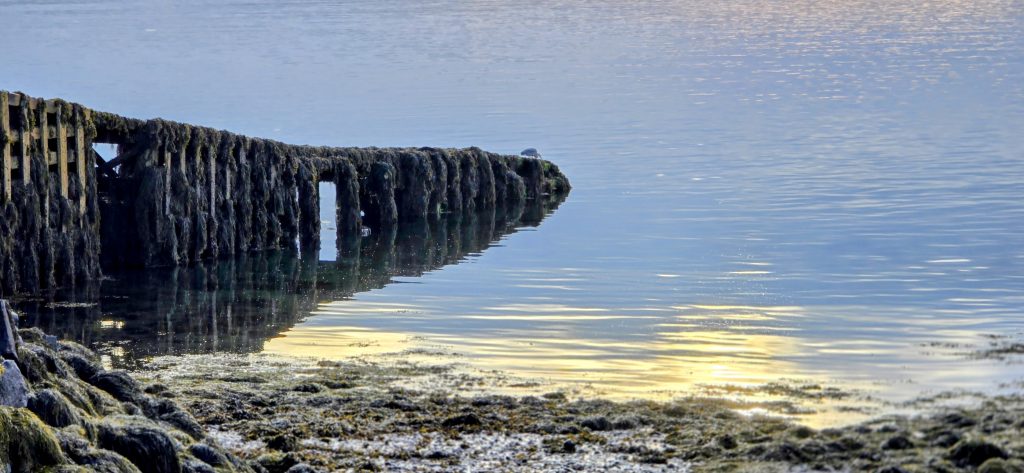
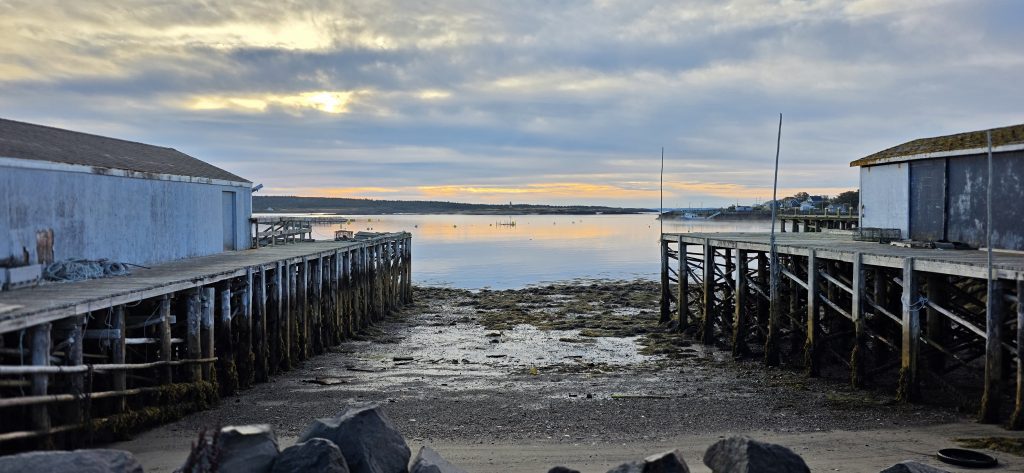
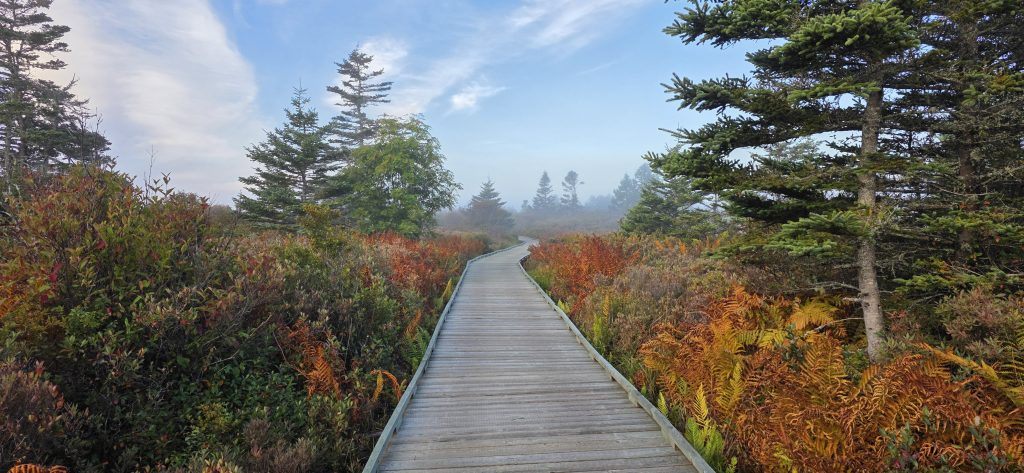
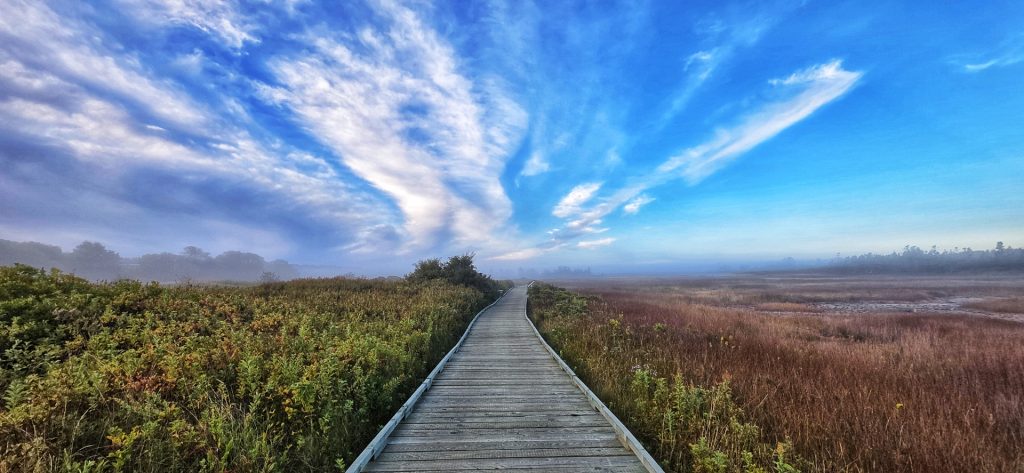
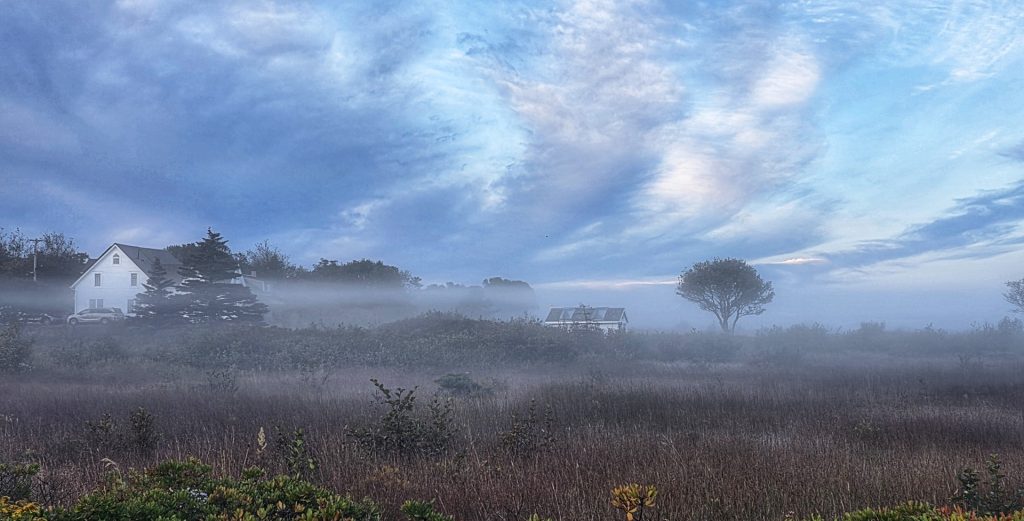

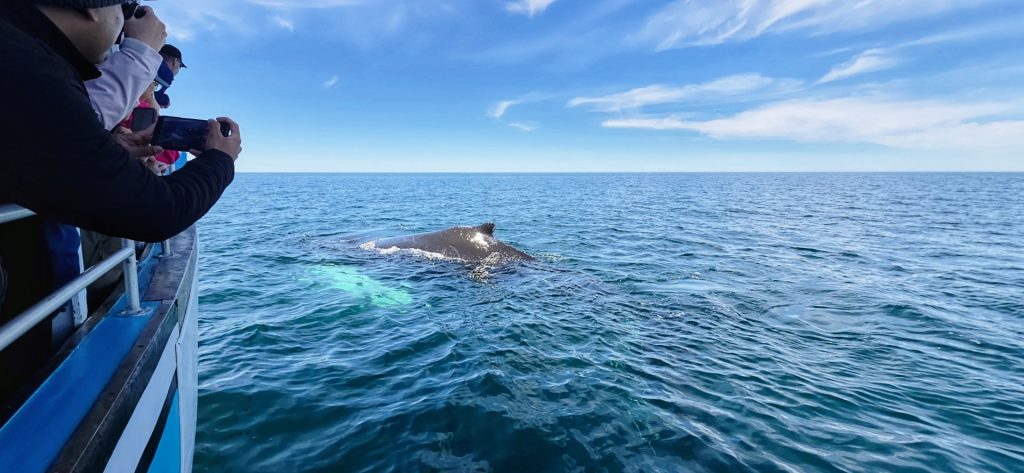




Inland Digby – Bear River
After the heady heights of your Whale Watching, a return drive to Digby is in order. And you may think that that is the end of your highlights of this area. It truly isn’t. There is still so much more to come. Heading just twenty minutes inland from Digby, you reach a very special village that is locally known as Little Switzerland. Bear River has a number of unique qualities that absolutely deserve a detour inland. Firstly, if you go at high tide, then the houses on slits are a definite magnet for photographers. With reflections bouncing off of muddied waters, you will be mesmerised by this quaint community. The second reason for a visit here, is to walk in the footsteps of Nova Scotia’s indigenous people. The Mi’’Maq. For nearly 13 thousands years, the Mi’Maq have called Nova Scotia and New Brunswick home and Bear River is one of their communities where their culture still thrives. If you come, you will love the plentiful art and craft galleries and the numerous cafes and in truth, you really won’t want to leave. It will steal just a little of your heart. Just make sure you time it right with high tide.
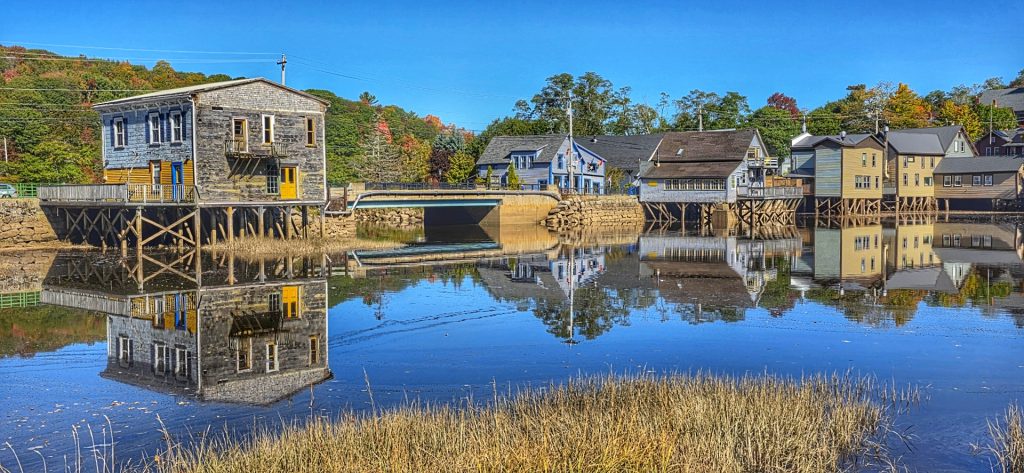
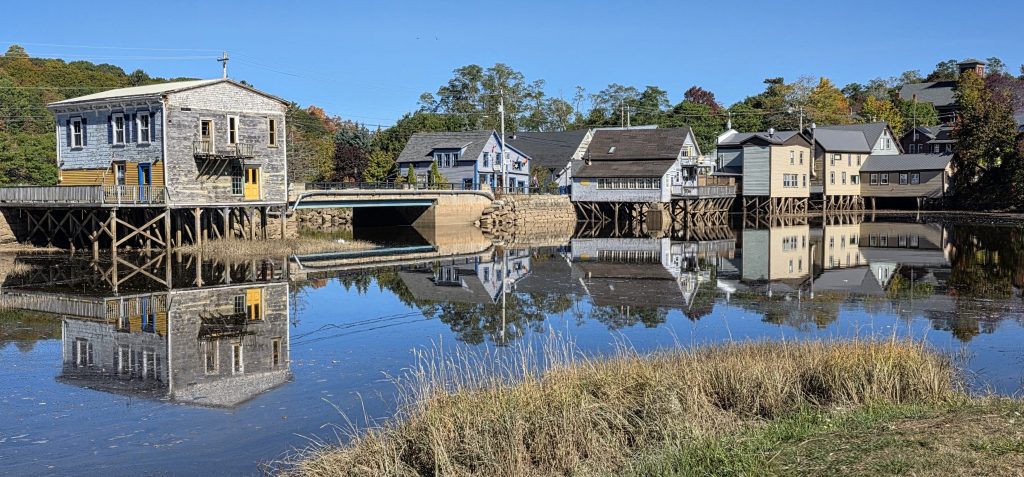
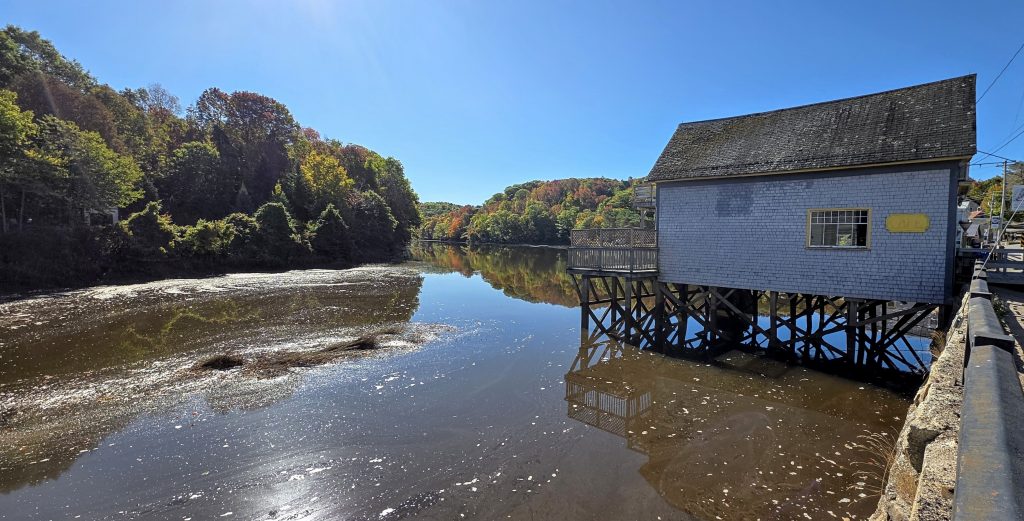

Digby – just 45 minutes north to Annapolis Royal
Our final discovery of Digby’s hidden gems takes you just a little north into the historic Annapolis Royal. It is here that you find the very origins of Nova Scotia. Such is its history that the journey north is well worth the detour if you truly want to uncover the culture and values behind this Maritime province.
Nestled in an estuary off the Bay of Fundy, Annapolis Royal is the birthplace of Nova Scotia. The town stems back to 1605 thanks to the first European to settle in this part of Canada, Frenchman Pierre DuGua. Then 24 years later the Scots came and established Charles Fort. Their inhabitation here was short lived and by 1632 they had mostly returned to the UK following France’s reclaiming of the area. However brief it may have been, the Scottish influence is significant not only to Annapolis itself, to the province as a whole. Thanks to their presence they initiated the name, flag and coat of arms.
Of course we can’t ignore that these lands were home to the indigenous Mi’kmaq for thousands of years before who defended their land through diplomacy and war. Annapolis saw a total of 13 battles through the 17th and 18th centuries between the French and British; the most warfare than any other place in North America.
Today relative peace reigns and history is now a marker for the story books that give us an insight into the shaping of Nova Scotian land, the Mi’kmaq and the Acadians as they all strive for interdependence and peace. I’m sure the world could look upon this place and may be, I stress may be, learn a thing or two about co-existing and mutual respect.
On your route home to Digby, we found a fabulous little cafe that is definitely worth a quick stopover for a beer or a burger, whatever takes your fancy. Fred & Dora’s Drive-in. What a joint this was with people queuing out of the door. An interior filled with 1960’s memorabilia and a seriously cool music vibe.


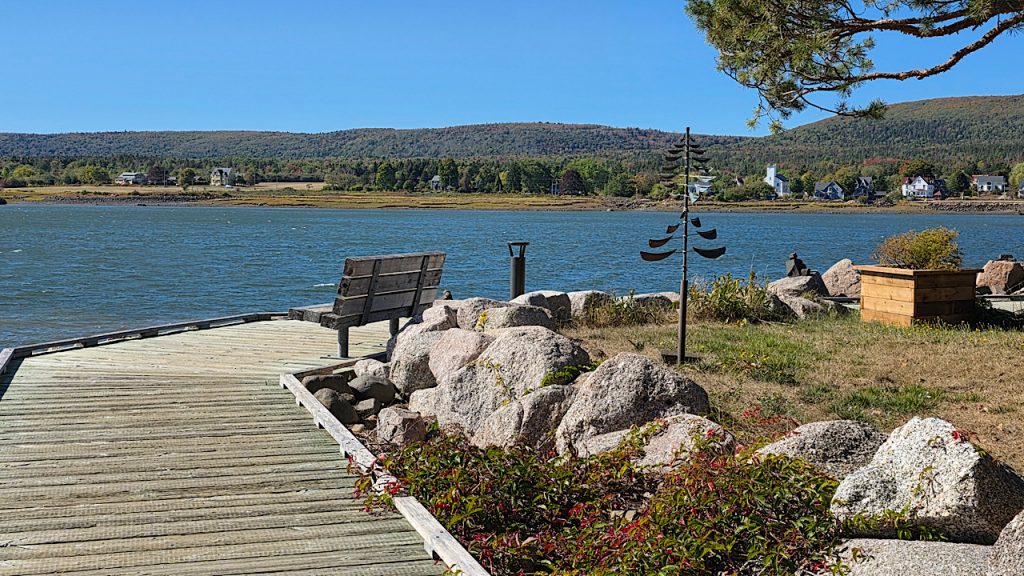




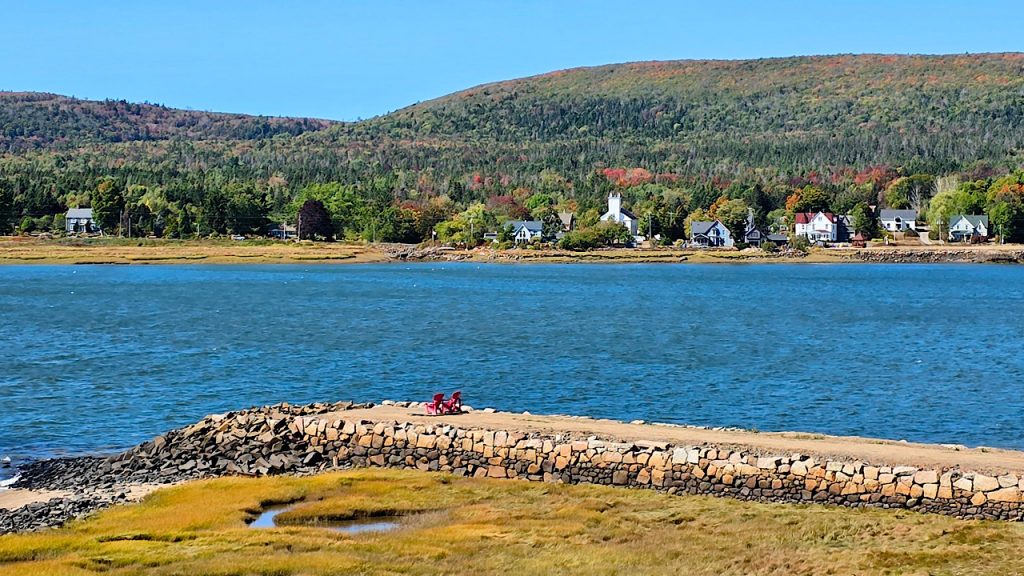


So as you can see Digby is so much more than the Scallop Capital of the world. It is in fact a magnificent centre for exploring its surrounding areas and learning about the very fabric of the Nova Scotian province. From its fishing industry, its geological prowess and its cultural place in the North American history books. Don’t pass by. Take some time to sit and breathe in the beauty and depth of this fabulous corner of Nova Scotia. For more blogs on Canada then check this out.

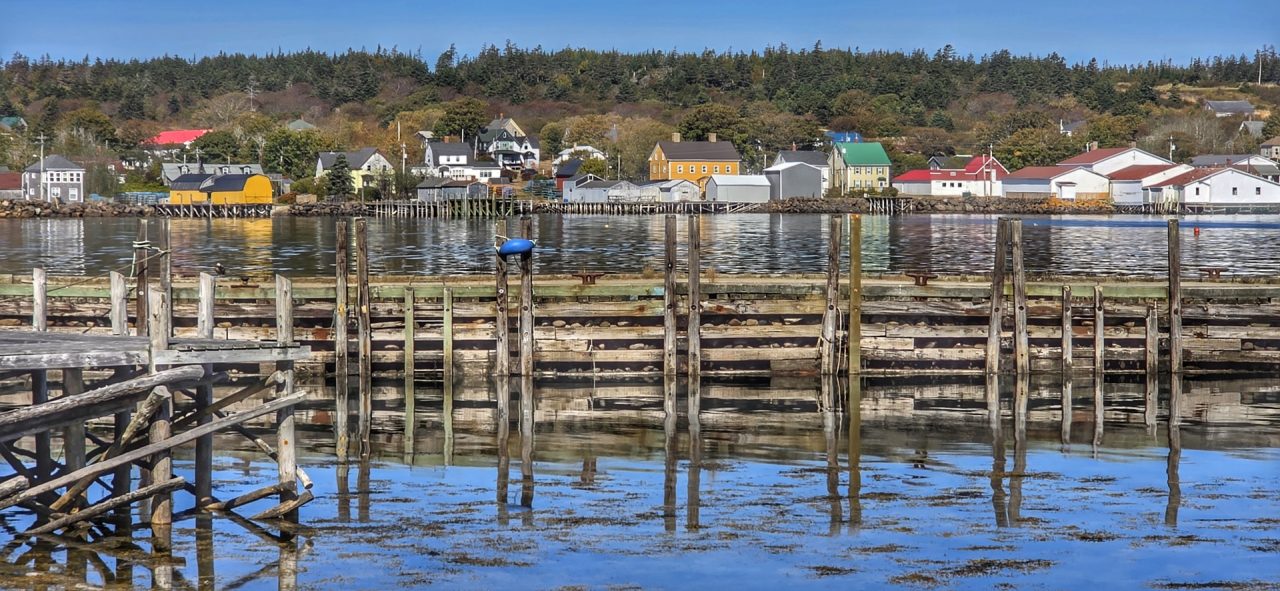
Digby ferry was very nice. I had the 2 golden retriever. Enjoyed talking to you.
Yes, Hi. It was lovely to meet you and your retrievers.